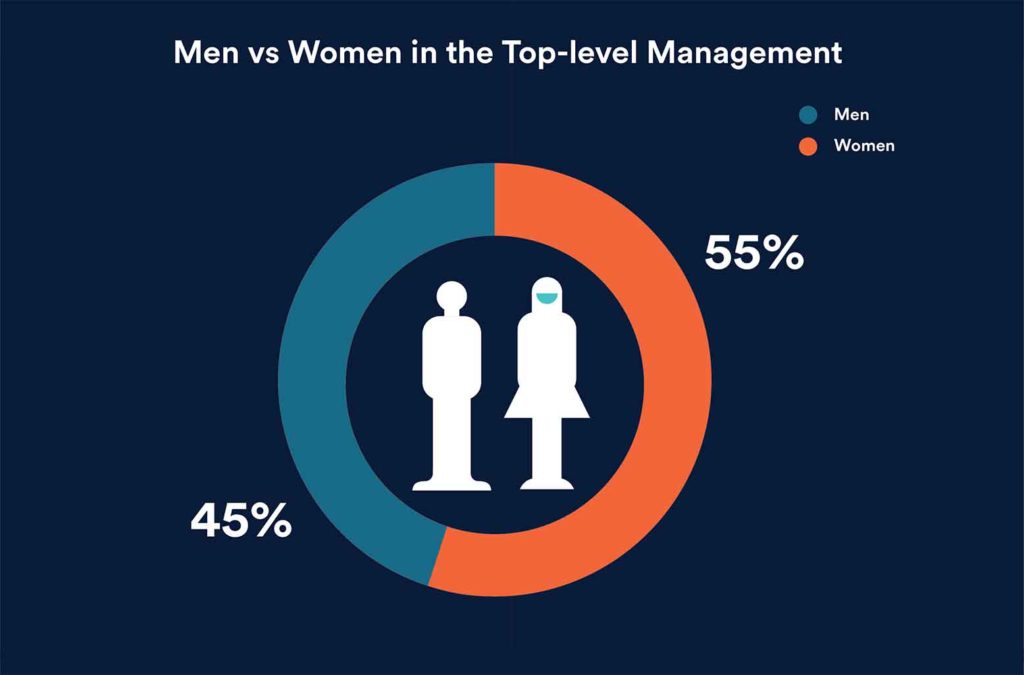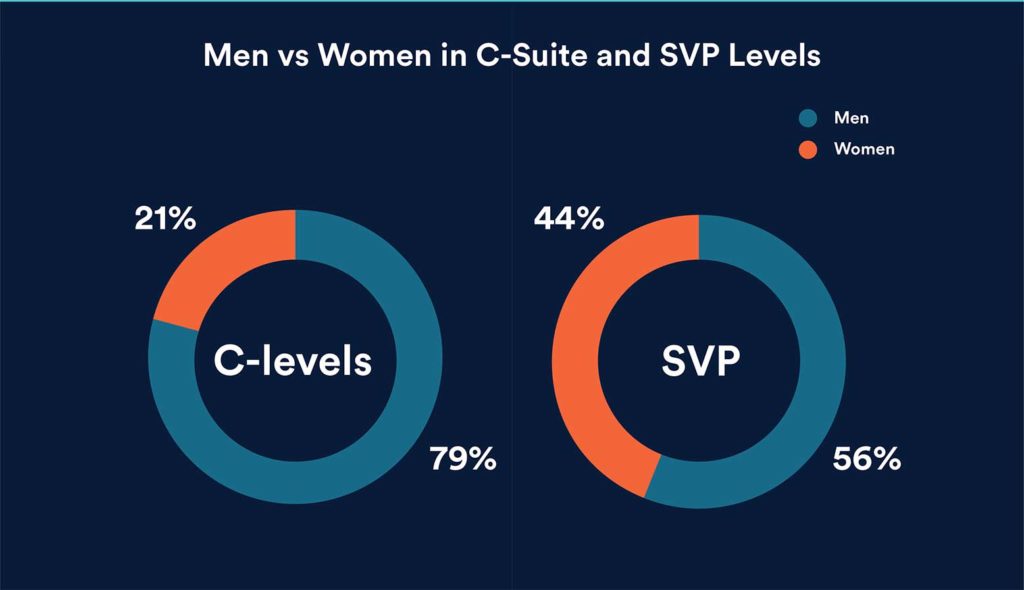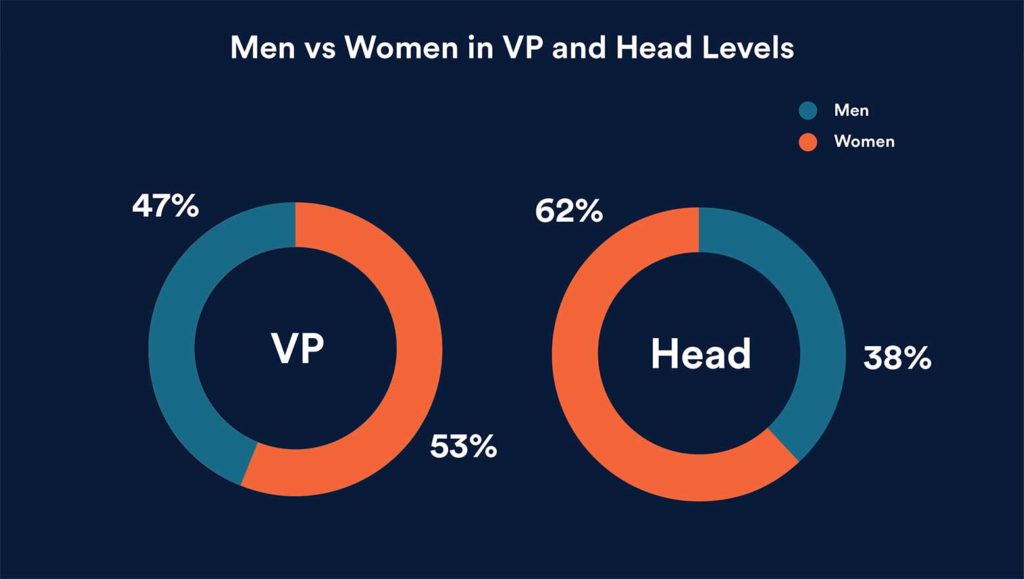The Philippine e-commerce businesses are dominated by women, a new study on gender-diversity on e-commerce businesses in the Philippines revealed.
According to the result of the study conducted by iPrice Group, entitled, Analyzing the Gender Diversity in the Top-level Management of Philippines e-commerce Market — women have dominated the top-level management of Philippine e-commerce business by 10 percent.
 Out of the top fifty (50) Philippine e-commerce businesses included in the study, the overall populations of the top level management were 55% women while only 45% are men. This surpassed the 24% global average by Grant Thornton Research published in 2018.
Out of the top fifty (50) Philippine e-commerce businesses included in the study, the overall populations of the top level management were 55% women while only 45% are men. This surpassed the 24% global average by Grant Thornton Research published in 2018.
In fact, the Philippines is consistent as the most gender-equal workplace in the world according to Global Gender Gap Index. The Philippines took the helm in South East Asia with the most number of women in leadership, technical and professional roles.
In the global realm, bolstering the role of women in the workplace is still an issue as gender inequality continues to be a critical economic challenge in many countries worldwide. This is because women account for about half of the world’s working-age population, yet women are less likely to be given opportunities for economic participation.
According to the analysis of McKinsey Global Institute reported in 2018, said that if every country matched the progress toward gender parity of its fastest-improving neighbors – the global gross domestic Product (GDP) could increase by up to $12 trillion in 2025.
In the Asia Pacific (APAC), targeted policies to address gender inequality could fuel an additional $4.5 trillion to the region’s combined annual gross domestic product by 2025, or 12 percent better than if the status quo were maintained.
The Philippines is the APAC’s most gender-equal country and is projected to expand by as much as $40 billion by 2025 if it can increase the involvement of poor and less-educated women into the workforce, the report concluded.
Men Hold More Senior Roles in C-Suite and SVP Roles
Despite that the women population in the Philippine e-commerce workplace dominates men, senior level such as C-Levels (Chief Executives Officers, Chief Marketing Officers, Chief Technology Officer, ETC) and SVP (Senior Vice President) roles are still dominated by men.

The percentage of men and women in SVP-level are 56 percent and 44 percent respectively. Meanwhile for C-levels, the percentage of men and women are 79 percent and 21 percent respectively. The men population lead is 14 percent for SVP-level and 58 percent for C-Levels. In general, the results suggest that gender gap continues to widen substantially higher up the managerial career ladder.
Based from the Philippine Institute for Development Studies (PIDS) research, the traditional gender role that “women are homemakers” and “men are providers” have influenced the gender inequality for women employees’ chances of breaking into the labor market.
Moreover, this backward mentality of “women nurture, and their advantages are in housework,” while “men provide, and their place is in the labor market,” have led to discrimination against women who aspire for career, the PIDS study disclosed.
The PIDS study also said that more career women tend to sacrifice their jobs for family life. The share of “opt-out” moms (those who are highly educated, high-achieving women) who choose to stay at home in order to care for their family rose to 29 percent in 2012, from its 23 percent low in 1999, according to Pew Research Center report. While the study covers the US population, it validates that the existing gender role dilemma (in the workplace) is a global status quo.
Women Hold More Roles in VP and Head Levels
While the population distribution became increasingly male in senior roles, women hold more roles in the VP-level and Head-level. The percentage of men and women in Head-level are 38 percent and 62 percent respectively. For VP-level, the percentage of men and women are 47 percent and 53 percent respectively. Hence, there are more women in VP-level and Head-level by 6 percent and 24 percent which is particularly smaller than the lead of men in SVP-level and C-Levels. Meanwhile, there is a positive result in SVP-level and VP-level as the distribution of men and women stand close with only 14 percent and 6 percent difference.
 Overall, the plan in achieving women’s economic empowerment (to address gender gap in the workplace) has a strong global framework with dedicated economic programs such as adoption of the 2030 Agenda, the Addis Ababa Action Agenda and the 10-year review of the World Summit on Information Society. Currently, UN Women and International Telecommunication Union created an action plan to close digital gender gap which is integral in achieving the Agenda 2030.
Overall, the plan in achieving women’s economic empowerment (to address gender gap in the workplace) has a strong global framework with dedicated economic programs such as adoption of the 2030 Agenda, the Addis Ababa Action Agenda and the 10-year review of the World Summit on Information Society. Currently, UN Women and International Telecommunication Union created an action plan to close digital gender gap which is integral in achieving the Agenda 2030.

